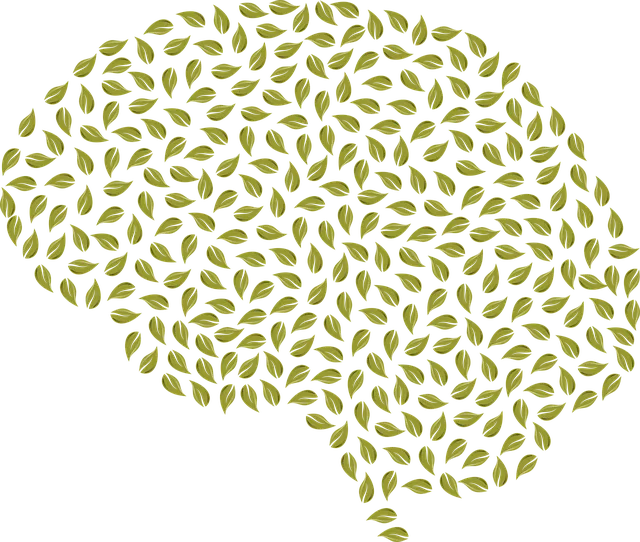Boulder Kaiser Permanente employs a comprehensive, dual-method approach to evaluate its mental wellness programs, combining quantitative and qualitative techniques. Quantitative methods include PHQ-9 depression assessments and surveys measuring anxiety levels via GAD-7, while qualitative methods involve interviews and focus groups. This blend allows for a nuanced understanding of both measurable outcomes (like improved emotional intelligence) and subjective experiences, enabling the program to refine treatments and tailor interventions to best serve clients' mental health needs. Through structured survey data analysis and in-depth exploration of qualitative feedback, Boulder Kaiser Permanente continuously enhances its mental health services, such as Trauma Support Services and Self-Care Practices.
The Boulder Kaiser Permanente mental health program’s success hinges on rigorous evaluation methods. This article explores effective strategies for assessing program impact through both quantitative and qualitative approaches, including survey data analysis, interviews, and case studies. We delve into key metrics for participant engagement and satisfaction, emphasizing client feedback as a vital tool for improvement. Additionally, we examine long-term outcomes tracking and resource allocation best practices, drawing from successful Boulder Kaiser Permanente initiatives to ensure sustained mental wellness program effectiveness.
- Assessing Program Impact: Quantitative and Qualitative Approaches
- – Overview of measurement tools used by Boulder Kaiser Permanente mental health program
- – Quantitative methods: surveys, statistics, and data analysis techniques
Assessing Program Impact: Quantitative and Qualitative Approaches

Evaluating the impact of mental wellness programs at Boulder Kaiser Permanente involves a blend of quantitative and qualitative approaches to gain a comprehensive understanding of their effectiveness. Quantitative methods, such as surveys distributed before and after program participation, can measure changes in symptoms, mood, and overall mental health status using standardized tools like the Patient Health Questionnaire (PHQ-9) for depression assessment. These data provide numerical evidence of improvements, identifying trends and areas where the program excels or needs adjustment.
Qualitative techniques, such as interviews and focus groups with participants, offer deeper insights into individual experiences. Discussions around themes like self-care routine development for better mental health, emotional intelligence growth, and changes in mental health awareness can reveal the program’s impact on personal well-being. These methods also allow for understanding the nuances of participant engagement, barriers to participation, and suggestions for improvement, contributing to a more nuanced evaluation that considers both measurable outcomes and subjective experiences.
– Overview of measurement tools used by Boulder Kaiser Permanente mental health program

The Boulder Kaiser Permanente mental health program employs a comprehensive suite of measurement tools to assess and evaluate the effectiveness of its services. These tools are designed to capture both subjective and objective markers of mental wellness, ensuring a holistic understanding of client progress. Among the most prominent metrics used is the Patient Health Questionnaire (PHQ-9), a self-reported questionnaire that measures symptoms of depression. Additionally, the Generalized Anxiety Disorder 7-Item Scale (GAD-7) assesses levels of anxiety, providing valuable insights into clients’ stress and worry patterns.
The program also integrates assessment methods focused on specific therapeutic outcomes, such as Compassion Cultivation Practices and Inner Strength Development. Tools like the Mindful Attention Awareness Scale (MAAS) evaluate mindfulness levels, while other measures gauge changes in emotional resilience and coping strategies. These tailored assessments enable the Boulder Kaiser Permanente mental health team to track progress, refine treatment plans, and foster confidence-boosting interventions, ultimately enhancing the overall well-being of their clients.
– Quantitative methods: surveys, statistics, and data analysis techniques

Quantitative methods play a crucial role in evaluating mental wellness programs, offering a structured approach to understanding program effectiveness. Surveys are a common tool, designed to gather data on participants’ experiences and perceptions. These can assess satisfaction levels, the impact of various interventions, and overall program performance. By employing statistical analysis techniques, researchers can identify trends, correlations, and significant findings related to mental health outcomes. For instance, Boulder Kaiser Permanente’s mental health programs have utilized surveys to gauge improvements in emotional intelligence among clients, highlighting the power of quantitative assessment.
Furthermore, data analysis techniques allow for an in-depth exploration of numerical data collected from various sources. This includes participant demographics, engagement rates, and the frequency of service utilization. By analyzing these statistics, researchers can gain insights into which aspects of a program are most effective, particularly when focusing on initiatives like Trauma Support Services or promoting Self-Care Practices. Such quantitative evaluations provide actionable feedback, enabling program managers to make data-driven decisions and continuously enhance mental wellness interventions.
The evaluation of mental wellness programs, such as those implemented by Boulder Kaiser Permanente, is a multifaceted process. By combining quantitative methods like surveys and statistical analysis with qualitative approaches, the program can accurately assess its impact on participant well-being. These strategies not only provide data-driven insights but also offer valuable perspectives from the individuals directly involved. This comprehensive evaluation ensures that the Boulder Kaiser Permanente mental health program continues to evolve, effectively addressing the unique needs of its community.






